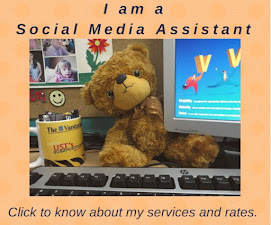Maintaining a clean and stylish home, even with animals indoors, is possible. Check out these tips on making your home as pet-friendly as possible.
Keeping the house clean and orderly can be extra challenging for pet owners. Animals have a mind of their own, and even the most effective dog training will not stop a pet from being, well, a pet. Still, pet owners will do anything for their furry kids, even if it means making adjustments to their homes and lifestyle to keep the pets safe and happy.
Having animal hair all furniture and clothes, bites and scratches on stuff, stains on the carpet - there are only some common problems that pet owners face in the household. These can be solved with the right planning and materials. Coupled with lots of love and effort, you can maintain a clean and stylish home even when you have pets in the house. Here are some tips on making your home as pet-friendly as possible:
Buy Pet-Friendly Furniture
Upholstered or slip-covered furniture and pets do not blend well together. That is why if you have pets staying indoors, having furniture made of stain-resistant fabric is essential. Certain materials are more susceptible to stains and stinky odors, which can make your couch unpleasant to sit or sleep on. Do away with fabrics such as silk, velvet, and tweed and opt for leather, synthetic microfiber, and materials made for outdoors. Also, choose fabrics in darker colors instead of white or beige.
Use Pet-Specific Items That Will Blend Well with Your Interiors
Cat litter boxes and dog crates are functional items that your pets need, but they look out of place with your home's interior. The solution is incorporating them with existing furnishings to make them blend seamlessly with your theme. Instead of using just the litter box, you can create a litter box cabinet where your cat come and go when the need arises. It also hides the litter box well and lessens odors and mess that comes with it.
Dog crates are mostly large and bulky, which makes it harder to hide. Why not create a kitchen island that has a space below that can serve as the dog crate? That is a stylish and space-saving solution that your pet will love.
Put Screens on Your Windows
If you have a two-story house or higher and have cats in the house, it's best to install screens on your windows to protect your felines from injuries. Cats go in and out of windows, and a lot of them get injured when they jump from higher grounds. Screened windows should be enough to keep the cats in and force them to use the door instead.
Avoid Having Carpeted Floors
Carpets will absorb stains and odors that come naturally from having pets in the house. Opt for ceramic tile or porcelain flooring instead, which are highly resistant to scratches and stains. If you have to use rugs, get ones that are washable and made of durable fabric. You don't want to end up wasting good mats on dogs and cats who will inevitably scratch them.
Use Trash Cans with Lids
If you have dogs, you know too well the probability of having trash strewn across your floor or lawn. Dogs have a knack for rolling around in garbage and other smelly stuff. To discourage your pooches from rummaging through the garbage, use trash cans with lids, especially for your kitchen, pantry, and bathrooms. If you can, place these garbage cans behind a kitchen cabinet or other closed-off areas to keep them safe from your dogs.
Create a "Mud Room"
Nothing beats seeing the pure joy on your dog's face when running around outdoors, especially in muddy areas. The problem arises when the dog re-enters your home with his dirty or muddy paws. One way to solve this problem is to designate a place in your house where your dog can clean off before entering the rest of the house. An existing laundry room will be perfect for this purpose, where you can also keep your dog supplies along with the dog shower.
Make Modifications to Curb Your Pet's Behavior
Cats will always love to climb and seek higher places to perch on. If your home lacks the space for him to do it, he will try to go outside, which is a problem if you want to keep your kitty strictly indoors. Arranging your furniture can solve this - you can have cat shelves installed, which allows them to prowl and climb all they want while still confined indoors. Even better is making them a cat patio outfitted with screen walls. That will effectively contain them while being outdoors technically.
With these ideas in mind, you can prepare a house for your furry family member. This way, you can ensure their safety and health, even without your supervision.


































